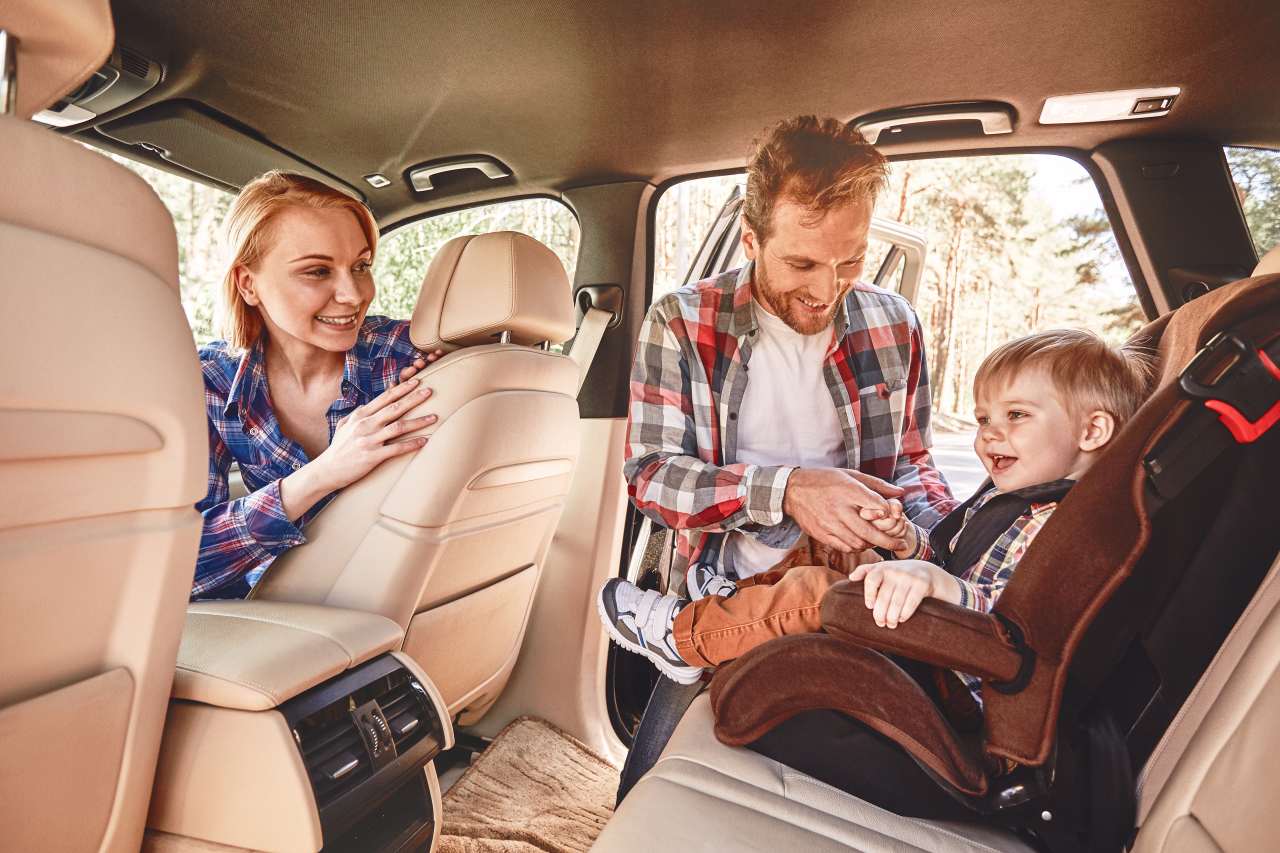Family Advice
Family related car advice from the leading motoring journalists in Australia. We're here to help you with any car issues that you may be having. Buying and maintaining a car can be an overwhelming experience especially when you are also raising a family. Here at CarsGuide we have you covered with all the latest information on researching, buying, maintaining and selling your family vehicle.
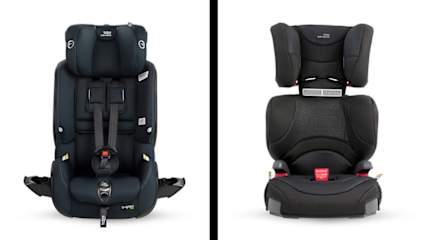
When can kids sit in the front seat of a car?
Read the article
By Emily Agar · 29 Apr 2025
When can kids sit in front seat?Ah, well the not-so-simple answer is that it depends on how many rows of seating your vehicle has, how many children are travelling with you and how old the children are. Oh, and it varies state by state.Confused? You’re not alone! In fact, there was a Bluey episode (Season 3, ep 49 if you’re interested) where they come across this very dilemma.What is the legal age to sit in the front seat in Australia? It’s a question all parents will eventually ask but the answer isn’t a simple one.In NSW, if a child is aged under four years old, they must not sit in the front seat of a vehicle that has two or more rows of seats. They can sit in the front seat of a vehicle with only one row of seats, like a single cab ute, but must use an approved forward facing child car seat suitable for their age and size.Children aged between four and seven years old must not sit in the front seat of a vehicle that has two or more rows of seats, unless the available seats in the back row are occupied by other children aged under seven years old. They must use an approved child car seat suitable for their age and size.However, since most front seats in Australian vehicles do not have a top-tether anchor point, the booster seat must weigh under 2.0kg. That means it doesn’t have to be anchored via a top-tether, just a three-point lap-sash belt.No rearward facing child seat can be installed in the front seat of a vehicle due to the passenger airbags.The laws change under certain circumstances. For example, if your vehicle is involved in a crash or breakdown, a child aged under 12 months can travel in a tow truck without a suitable child restraint.If a suitable child car seat is not available, they can sit on the lap of another passenger. If the tow truck has two or more rows of seats, they must sit in the back seat. You can find all of the child seat rules here for NSW.Rules are similar across the other states with a few minor variations. Seven years old seems to be the age benchmark but I’ve outlined the rules below.In QLD, where children under four must not sit in the front seat of a vehicle where there is more than one row of seating. Children aged between four to six years old can only sit in the front seat if all other seats are occupied by children under seven years old.However, children seven years and over can sit in the front seat.With vehicles that only have one row of seats, children of any age can sit in the front seat as long as they are properly restrained. If a car has a passenger airbag, a rear-facing child restraint shouldn't be used in the front seat.In Tasmania, South Australia, and Western Australia, a child can sit in the front seat when they are seven years old or older according to Transport Tasmania. However, it's recommended children under 12 be in the back seat for safety reasons, even if they are over seven years old.In the Northern Territory, a child can legally sit in the front seat at the age of seven years and over. Children aged four and seven years old can only sit in the front seat if all other rear seats are occupied by children under seven. Children under four must not sit in the front seat of a vehicle with two or more rows.In Victoria, children under the age of four years must only travel in the back seat of a vehicle. Children aged four years old to under seven years old can only sit in the front seat if all of the back seats are taken by other passengers under seven years old. The child must travel in a booster seat without a top tether strap, because there will be no anchorage points for the front seat.Children aged seven years and over can travel in the front seat. However, research shows children under 12 years are much safer travelling in the back seat.Did you know that road crashes are the major cause of accidental death for children aged under 15 in Australia?According to the Royal Children’s Hospital (RCH), a child’s risk of serious injury in a car crash is much higher if they are unrestrained in the car (not in a car seat, booster seat or adult lap-sash seat belt), not restrained correctly (in a car or booster seat not suitable for their size) and travelling in the front seat of the car. The latter doubles their risk of serious injury or death.Despite most road laws being aged based, medical and road safety experts recommend children remain sitting in the back seat until they are at least 12. The injury risk to children under 12 is nearly double in the front seat compared to the back seat, regardless of the type of child car seat.Dangers for children sitting in the front seat include powerful airbags and poorly adjusted seatbelts that are too big for a small child.Children can sustain injuries from adult seatbelts that do not fit them correctly.It’s recommended that a child not move out of a child seat restraint until they are 145cm and above in height.In NSW, you can expect a fine of $353 and three demerit points if you don’t follow the correct child restraint/seating laws.In QLD, a fine of $1161 and four demerit points apply. In Tasmania, a fine of $350 and three demerit points apply.In the NT, a $480 fine and a $20 Victims of Crime levy applies, as well as three demerit points per child not properly restrained.In SA and Vic, a $407.25 fine applies, as well as, three demerit points.In WA, a fine of $600 and four demerit points apply.For children up to three years old, a rearward facing child seat is recommended. We used the below model when my son was little.A harnessed booster seat like those below is recommended from the ages of 12 months to eight years old. The seat below is the model I currently use for my son.A booster seat that uses a harness (safest) or the adult lap sash belt as per below are recommended until the child reaches 145cm or above but many parents choose the legal ‘age-based’ rule instead. The model below is what we chose for my mother's car.The general rule of thumb Australia-wide is once they hit their seventh birthday, but most states recommend they be 145cm or taller before they move out of a child restraint as this height positions them, and the seatbelt, in the correct safety position.A fact that my eight-year old is appalled by because he, like most seven-year-olds, hasn’t hit that height benchmark! And most kids don’t until they’re around 11-years old. So, my son will just have to wait until he is tall enough. He makes me measure him every other week, poor bloke.
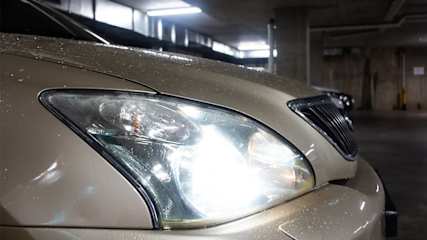
Top 10 most common problems in used cars
Read the article
By Marcus Craft · 27 Mar 2025
Sometimes a new car’s price puts it out of reach of a potential buyer, or that buyer is simply at a stage in their life where a second-hand vehicle is a better fit for them.What are used cars?A used car (aka a second-hand or pre-owned car) is simply a car that is not new. It has been previously used and owned and is then resold through a car dealership, via a private seller, or an online marketplace (such as Gumtree Cars).Do they tend to be more prone to problems?Not necessarily but, by their very nature, they have been used before, so they’ve been subjected to wear and tear, as well as the previous owner’s (or owners’) good or bad maintenance habits – and, of course, used cars are older than new cars.However, new cars may also trouble their owners with myriad common car problems and are even sometimes subject to recalls over faults or car issues that only come to light after that new vehicle has been on sale and out in the real world for some time.The good news is consistent maintenance, vehicle awareness and car troubleshooting should help you to prevent any common problems in used carsHere are 10 common problem areas in used cars and we’ll work our way from the tyres up.Note if the vehicle in question is an AWD or 4WD, chances are it has been put through a tremendous amount of stress and strain on tough terrain, so it deserves even closer scrutiny before you even think about purchasing it.Tyres are your vehicle’s first – and hopefully only – point of contact with the ground, so your tyres should be in great condition with plenty of tread depth, no cracks in the tyre’s surface, and no uneven wear and tear.What are the signs of this problem?When you notice uneven tyre wear, damage (cuts or splits) or, worse, changes in the car’s on-road dynamics while you’re driving, for instance steering pulling in one direction, or high-speed vibrations, it’s time to get your tyres checked out by a pro because tyre strife is no joke.How can you avoid this problem?Regularly check tyre condition for wear and tear, always run tyres at the manufacturer recommended pressure (refer to the tyre placard in the vehicle or the driver’s manual), and have the tyres rotated (about every 5000-8000km) and balanced, and the wheels correctly aligned. Also, replace tyres if they are 10 years old or more – a tyre’s date of manufacture is stamped on its sidewall.If the brakes on a car aren’t working properly, then the issue can range from mildly annoying (best-case scenario) to dangerous (worst-case scenario). Faulty/damaged/worn-out brake pads, rotors, or callipers may lead to poor braking efficacy (i.e. longer braking distances, brakes that are slow to bite etc) and so increase the risk of an accident, minor or otherwise.What are the signs of this problem?When you notice any unusual noises from the brakes when you do brake (such as high-pitched screeching), or obvious poor performance (i.e. longer braking distances, brakes are slow to bite or bite with a jerky on-off action etc) or even a brake warning light coming on. The culprit may be the brake pads, rotors or callipers.How can you avoid this problem?Unfortunately, this is one of the common car problems but it can be remedied with diligent maintenance. Undertake regular maintenance (according to guidelines in the vehicle owner’s manual) and regularly check the condition of all of your brake pads.If there are odd noises coming from the brakes, your best bet is to tackle the issue as soon as you aware of it – don’t let it become any worse than it already is.There’s no harm in having a look yourself but, by all means, get a pro to address the problem if you’re more comfortable with that.Have the brake pads and rotors checked and, if they’re too worn, get them replaced. While the mechanic is there, have them check for leaks, drain the brake fluid and replace, and, if needed, bleed the brake fluid.Any issue with the vehicle’s suspension is the next thing to watch out for and you’ll quickly recognise if there is something wrong because the car may ride and handle like a mechanical bull – well, not quite that bad but you get the idea.What are the signs of this problem?Suspension strife – worn-out or damaged shocks, struts etc. – will result in a choppy wayward ride and poor on-road handling with impacted steering.There may be noises coming from some part of your suspension set-up and your tyres may be wearing out unevenly and faster than they should.How can you avoid this problem?Regular maintenance, in accordance with guidelines in the owner’s manual, and being sure to check all suspension components, will hopefully pick up any potential issues before they become serious.When there is an issue, there’s no harm in having a look yourself but, by all means, get a pro to address the problem if you’re more comfortable with that.Have the shocks, struts and entire set-up scrutinised, and have any worn-out or damaged components replaced. If it’s an AWD or 4WD, it may have been punished in off-road situations and will need extra attention to avoid any issues down the track.The exhaust system gets rid of your car’s emissions and any problem with it quickly becomes obvious.What are the signs of this problem?Rust may be the culprit here, or loose exhaust pipes, or a leaking exhaust manifold (often indicated by a ticking or tapping noise in the engine, an illuminated ‘check engine’ icon, and a strong exhaust smell).Any strife with the exhaust system may result in poor fuel efficiency and – warn your neighbours! – a too-loud exhaust note.How can you avoid this problem?Regular maintenance, in accordance with the recommendations in the owner’s manual.Make sure you check all exhaust components when you’re scrutinising a car and hopefully that will pick up any potential issues before they become serious.To fix this problem, you’ll have to replace any rusted, damaged or broken parts, any loose sections of the exhaust will have to be tightened, and the leaking exhaust manifold will have to be sorted out.Any issues with your electrical system – lights, indicators, brake lights, power windows etc – should be addressed as soon as possible.What are the signs of this problem?Electrical problems may manifest as headlights (or other lights) that work only intermittently or not at all, power windows that don’t work properly, or interior lights that are faulty.A blown or faulty fuse, damaged or old wiring, or even a battery issue may be the cause of an electrical system malfunction.How can you avoid this problem?Regular maintenance, according to guidelines in the owner’s manual, will reduce the chances of minor issues becoming major issues.Conduct a full inspection of the electrical system (including wiring), replace any blown or faulty fuses, and check the battery and replace if required.A faulty cooling system could result in an overheating engine, which may become even more serious engine strife and lead to damage to – or even failure of – other components in your car.What are the signs of this problem?Some indications of a cooling system problem include that aforementioned overheating engine, the engine temperature gauge rising to a high level quickly, or an obvious coolant leak.Potential causes may include a split or clogged coolant hose, a leaking radiator, or a faulty water pump.How can you avoid this problem?Regular maintenance, according to guidelines in the owner’s manual, will reduce the chances of any minor issues becoming major issues. Pay attention: if the coolant system warning light/icon is illuminated on your dash driver display, then address the issue immediately – check coolant levels and the radiator and hoses.Potential fixes include flushing the cooling system, and replacing the radiator.Any strife in the fuel system – which consists of fuel filter, pump, injectors (or carburettor if the car is very old), and, of course, tank – means fuel delivery to the engine is compromised and, as a result, the car’s overall performance will suffer.What are the signs of this problem?If the car exhibits any of these signs – rough-as-guts idling, lacklustre acceleration, engine misfires, loss of power at high revs, and/or reduced fuel efficiency – then it’s a strong indication something is amiss in the fuel system.The cause? It could be anything from a clogged, old or even incorrect fuel filter, or pump; carbon deposits in the fuel delivery set-up, poor quality fuel (beware the dirty go-juice!) or something else.How can you avoid this problem? Regular maintenance, according to guidelines in the owner’s manual, will reduce the chances of any minor issues becoming major issues.Check fuel lines, and the fuel filter, pump and replace as necessary. Clean clogged injectors or get a pro to take a look if you want a second opinion and have those replaced if needed.Engine oil is a lubricant designed to reduce damaging friction created in the inner workings of an internal-combustion engine. Without enough clean engine oil, mechanical parts wear out faster than they would otherwise.An oil leak can signal a minor problem which has the potential to become a major problem if you don’t crash-tackle it at the source as soon as possible.What are the signs of this problem?Some indications that oil is leaking from the car: a puddle of oil on your driveway, low oil level, and/or engine overheating.Oil leaks may be caused by too-low oil levels, worn-out gaskets and seals, or faulty oil filters or other components.How can you avoid this problem?Regular maintenance is key. Pay attention to the condition of all oil-related components and fix leaks immediately to avoid minor issues becoming major issues.Always use the correct type of oil (read the owner’s manual) and replace any faulty parts as soon as possible.Get a professional to take a look if you want a second opinion.A fault in a manual transmission (a gearbox) or in an automatic transmission, if left unchecked, may result in costly repairs down the track so it’s best to address any transmission issues as soon as humanly possible.What are the signs of this problem?There may be clunking or grinding noises emanating from the gearbox or it may slip out of gear, strong burning smells (transmission is overheating, low fluid level), obvious leaks (worn-out seals or gaskets), and/or the ‘check engine’ light comes on.How can you avoid this problem?Regular maintenance, according to guidelines in the owner’s manual, will reduce the chances of any minor issues becoming major issues.Maintain correct transmission fluid level (refill or change as needed), check for transmission leaks and consult a mechanic if repairs or replacements parts are needed.Overview of this problem and what it entailsProblems with steering in a used car – or, for that matter, any car – is a serious safety issue.What are the signs of this problem?Steering strife is obvious from the get-go:Any trouble with turning the steering wheel (potential cause: power-steering fluid leak somewhere in the steering set-up)Vibrations through the steering wheel (potential cause: possible contaminant build-in the power-steering system)Steering pulls to one side (potential cause: worn-out steering gear, lack of power-steering fluid)Loose-feeling steering wheel (potential cause: worn-out steering rack, tie rod)Steering wheel slips when you turn it (potential cause: pump issue, worn-out steering rack mount, or worn or loose power-steering drive belt)Grinding noises when you turn the steering wheel (probable cause: steering gear problem)Screeching noise when you turn the steering wheel (possible cause: loose or worn-out power-steering drive belt or low power-steering fluid level)How can you avoid this problem?Conducting a bit of car troubleshooting and regular maintenance, according to guidelines in the owner’s manual, will reduce the chances of any common problems in used cars becoming major problems.Regularly check the power steering fluid level, steering pump, hoses and steering rack. Note if the power steering fluid is foaming or discoloured, there may be air or water in the system, so it’s not doing its job properly and should be replaced.

How to choose the best family car for you
Read the article
By Emily Agar · 17 Aug 2022
'What to look for when shopping for a family car' in Australia.'

Top five slimline child car seats
Read the article
By Stephen Ottley · 29 Mar 2022
Keeping your children safe is the top priority for any parent - and that includes when you’re in the car.
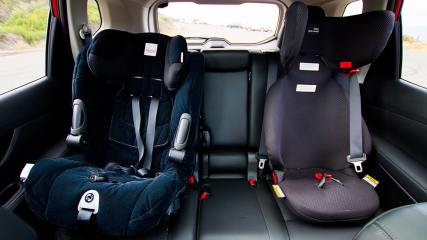
Baby car seats: Four best car seats in Australia
Read the article
By Stephen Corby · 21 Oct 2020
What is the best baby car seat for your child, what makes it so good and how much will it cost you - these are questions that, if you’re about to have your first child, you can’t quite believe are not just on your radar, but suddenly blocking almost everything else. (Here's a tip: the word 'safety' is the one you'll be rolling around in your mind the most.)
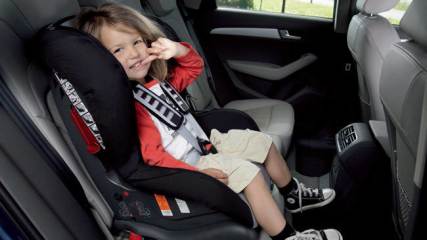
Forward facing car seat age: When can babies face forward?
Read the article
By Stephen Corby · 22 Sep 2020
What is the age a child can use a front-facing car seat? Well, in Australia that answer is both simple and confusing. Legally, your gorgeous, wonderful baby must be kept in an approved rear-facing seat until he or she is six months old, and from that point you can put them in a forward-facing seat, but… you don’t have to, and they can stay facing backwards if you prefer.

Top five large family cars
Read the article
By Laura Berry · 10 Jul 2020
Have enough kids to start your own cult? Feel like a mother duck with your train of ducklings when you're at the supermarket? Then you need a large car.
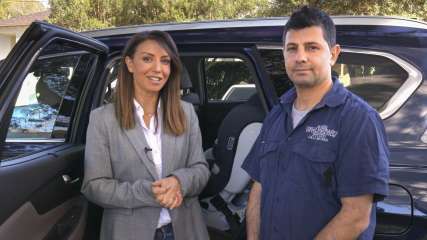
Baby car seat installation - how to install a car seat correctly
Read the article
By Nedahl Stelio · 11 Mar 2020
Installing child car seats used to be worse than building an IKEA cupboard from scratch, but with the introduction of ISOFIX child seats, much of the mystery has been solved. You also get a much more secure baby seat which doesn’t wobble in your car, which brings valuable peace of mind for any parent. It’s
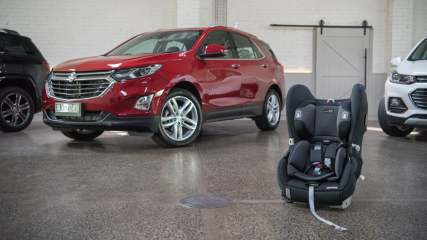
What you're getting wrong when installing a car seat
Read the article
By Tung Nguyen · 08 Oct 2019
The installation of a car seat is probably quite low down on your list of concerns if you’ve just had a child, but the safety device is crucial when travelling with precious cargo.





